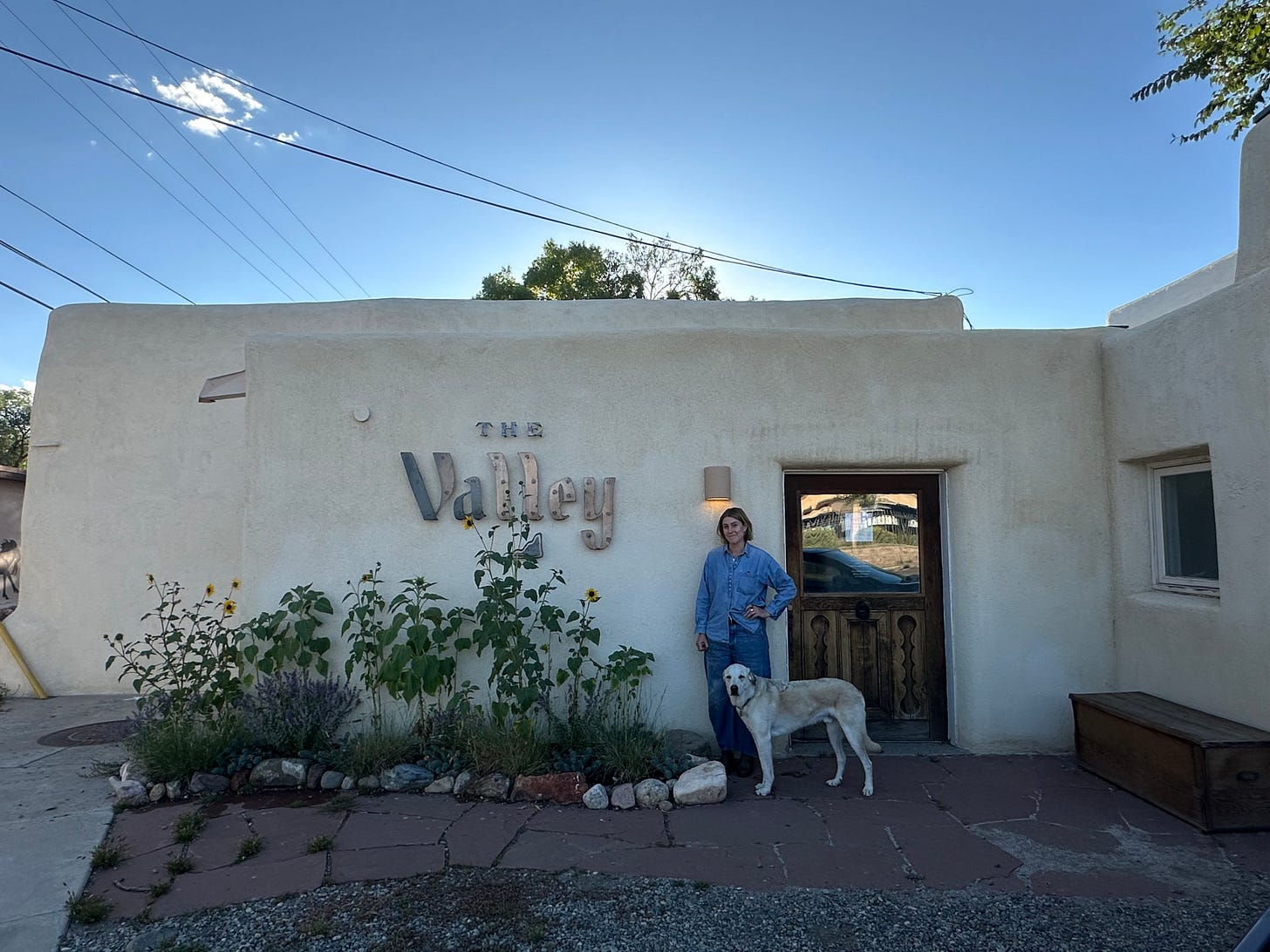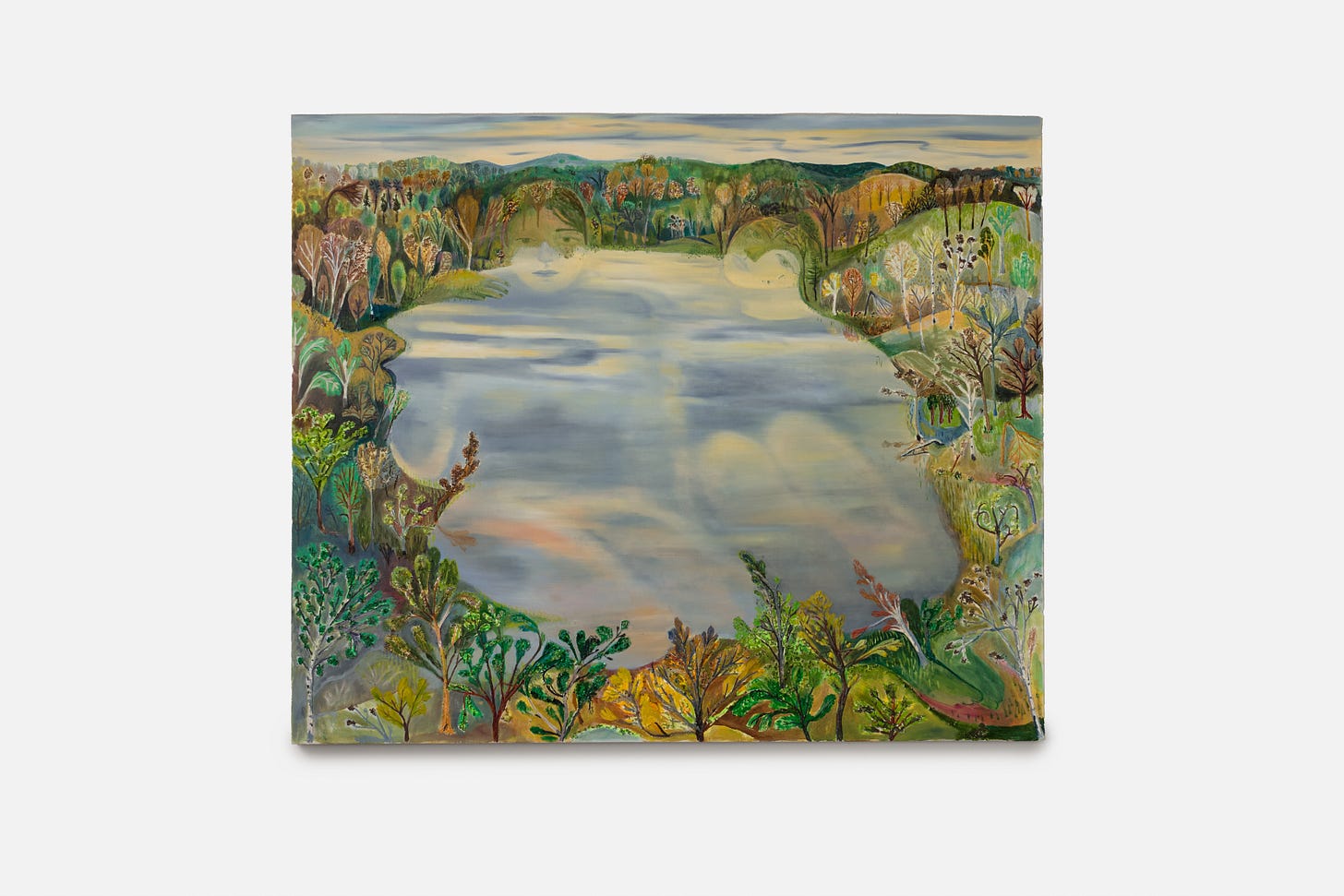A Minute With Ari Myers of The Valley
Hi! This is a newsletter about artists I like.
I began acquiring art through some friends who worked in galleries. I started small, working on a limited budget for stuff I could afford. As time passed, my collection grew, and it was exciting to watch many of the artists I'd collected go on to bigger shows and critical acclaim. My goal with this newsletter is to make a digestible resource for anyone interested in artists making excellent (and still affordable!) work whom you haven't heard about... yet.
The fun thing about this newsletter is one leads to another, or 5, connections/recommendations from a previous one. It’s selfishly why I keep doing this. Discovery! I’ve enjoyed emails/texts/calls with Ari of The Valley and a huge fan of her as a person and as a gallerist. I look forward to getting to New Mexico soon….
How did The Valley and running a gallery come to fruition?
AM: After my graduate studies in art history I held curatorial roles at a museum, an art advisory, and a non-profit exhibition space. Through this work I became interested in collaborating with artists in deeper and more long-term ways. I decided to start a commercial gallery so that I could be more involved in supporting the artists I admired by stewarding their careers and markets.
The Valley is located in Taos, New Mexico. I was drawn to living in Taos because of the rich and complex history, culture, and creative community. Taos is also situated in an incredibly beautiful landscape, with a lot of publicly accessible land and water nearby. I decided to open the gallery here because I wanted to live here, and enjoy a lifestyle and hobbies that would be difficult to maintain alongside a career as a gallerist in a big city. It can be challenging to remain connected to the global contemporary art world while living in a rural area, far from an international airport. But I’m so grateful to live here, and do this work here. I’m going to keep working on the balance.
We talked a bit about this but do you feel you have a bit more freedom to play by your own rules in this day and age as a gallerist? It almost seems like you are doing it right in that you have picked a place that is much more affordable to operate and allows you to have a legit community because there isn’t a gallery at every block, unlike your typical city art markets….I also may be totally off here so apologies in advance.
AM: What I’m attempting to do with The Valley is very different from the other galleries in Taos- so as far as our local arts community goes, I knew it would take awhile for it to catch on and that it would be better to let that happen organically. The first few years I was more concerned about what I had to prove to the art world more broadly. I felt a lot of pressure to demonstrate that the gallery was “just like a New York gallery.” I wanted to be included and well-regarded in the part of the art world I aspired to. And I was hopeful that with the right approach The Valley’s reach could be comparable to that of an emerging gallery in a bigger city.
Since the gallery has become more established, I am starting to feel more confident in the ways my approach might differ, and am trying to give myself more permission to follow my intuition and impulses when they diverge from the status quo.
I’m also a big fan in that you seem invested in your area/state to find and work with amazing artists, such as Sarah M. Rodriguez. Was working with artists in your area something of high importance or was it more of a natural thing in that you saw her work and found out she was in close proximity?
AM: I opened the gallery with the intention to take a thematic approach to programming. Making exhibitions that align with my curatorial interests in esotericism, craft practices, and connection to place. All of these themes are right at home here in Northern New Mexico, as they are very much threads that run through the art history in the region.
I try to feature artists who live and work in the Southwest in about half of our exhibitions each year. I want to strike a balance between spotlighting regional positions and engaging a broader audience. I also represent artists who live in New York and Los Angeles, and they act like satellites for the gallery, which has been an incredible support.
Sarah M. Rodriguez and I moved to Northern New Mexico around the same time, and we connected a little over a year after I opened the gallery. I was immediately drawn to her cast aluminum sculptures, and have continued to be impressed by her thoughtfulness and rigor as an artist, a researcher, and an animal trainer. In all of these practices she is deeply interested in relationships between human and non-human living things, the structures and hierarchies of power that have historically scaffolded these relationships, and the possibility of a future where all life forms are liberated from violence, pain, and domination.
This year I’m introducing two additional New Mexican artists to the program- Zoë Stiler and Joanna Keane Lopez. We’ll also present solo exhibitions by Amelia Lockwood (on view currently), a Los Angeles based sculptor who works primarily with ceramic, and New York based Henry Harper who is a self-taught multimedia artist.
Whats’ next for The Valley?
AM: Full transparency- the market instability of the last few years has taken its toll, and coming into 2025 I was feeling really burned out. For the foreseeable future we’ll be taking a bit of a slower approach to our programming, and have taken a pause on participating in art fairs as well. My number one priority is for the gallery to be able to sustain itself and stick around for a long time. For this to be possible I realized that I needed to be both realistic about the energy and resources it takes to produce exhibitions and offsite projects, and creative about what’s possible rather than just following the leader.
We’re going to try out a pop-up space in Santa Fe this summer, which I’m really excited about. I’m eager to try re-allocating some of the budget we would typically utilize for fairs into renting temporary space in cities where the gallery has support. Art fairs take place over a long weekend and you’re typically exhibiting alongside 100+ other galleries. It can feel like you’re fighting for attention. I’m curious about how relationships could be formed if we had more time and more focus.
In the long term, I hope that it is possible that this program rooted in the Southwest becomes relevant and respected nationally. And I wish for our artists to have the consistent support they need to sustain and grow their practices, and live comfortably.
Does being in a relationship with an artist, who rules by the way, have advantages in terms of running a gallery? Perhaps a different lens in the kinds of shows you curate?
Johnny and I tend to have pretty diverging opinions on most things about art/the art world. Haha. His perspective being so different than mine makes him super helpful as a sounding board though, and he helps me with a lot of the art handling, shipping and install side of things. His work behind the scenes has definitely been core to my ability to run the gallery. But we also have to work to create some intentional space between our respective projects. Otherwise all we ever think about or talk about is work!
We have talked a bit about people’s reservations in buying art due to insecurities etc. care to chat about your thoughts on that and ways a gallery can overcome that? (feel free to reframe this or not answer if thats a silly question)
It’s not really a surprise to me that the art market is at a low moment. Economic stress, political instability, and an extreme level of saturation (an art fair every week somewhere in the world, galleries with multiple physical locations + multiple exhibitions running concurrently, and the emergence of platforms for buying art online) have reached a fever pitch in the last few years.
I’m not certain how a gallery can overcome this- I’m in the throes of trying to figure that out! Reflecting on this prior to committing to our 2025 programming, I was trying to be more thoughtful about the ways I may be contributing to the saturation/overwhelm for collectors/art enthusiasts. I can't change the economic and political anxieties, I have them too, but I can be more clear and committed to the projects we are putting forward with artists.
I think collectors should know that emerging galleries and artists are feeling this dip in the market acutely, and their support in a time like this is going to be incredibly impactful and will be remembered. It’s definitely a buyer’s market right now and I think it’s a positive that galleries are having to drop the false sense of exclusivity (one of my biggest pet peeves about the industry) and be more transparent. I think prices will also stay more stable which will result in emerging artist’s markets being built in a more sustainable way. I am hopeful that these factors will make for a better experience for collectors who are just getting started, especially those who are buying close to home from regional galleries. For galleries, I think our willingness to engage and build new relationships right now is going to be crucial to surviving this slow period.
*******
Thank you Ari!






